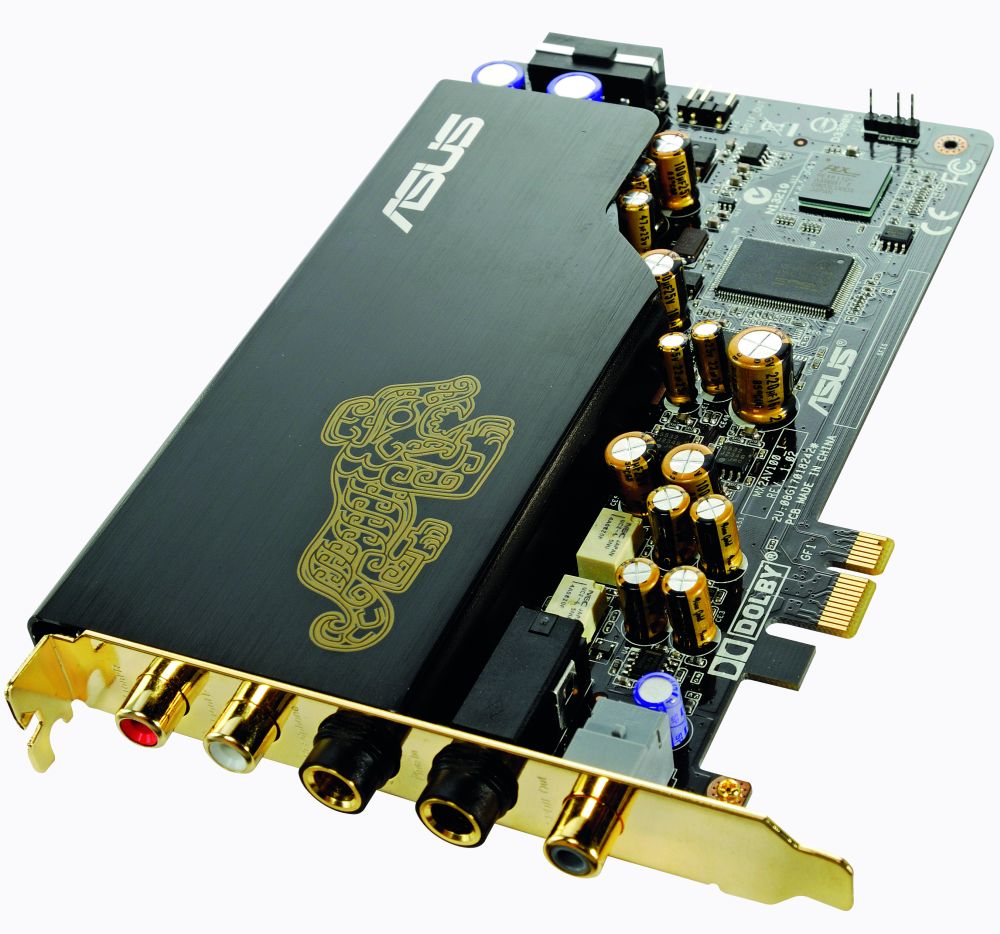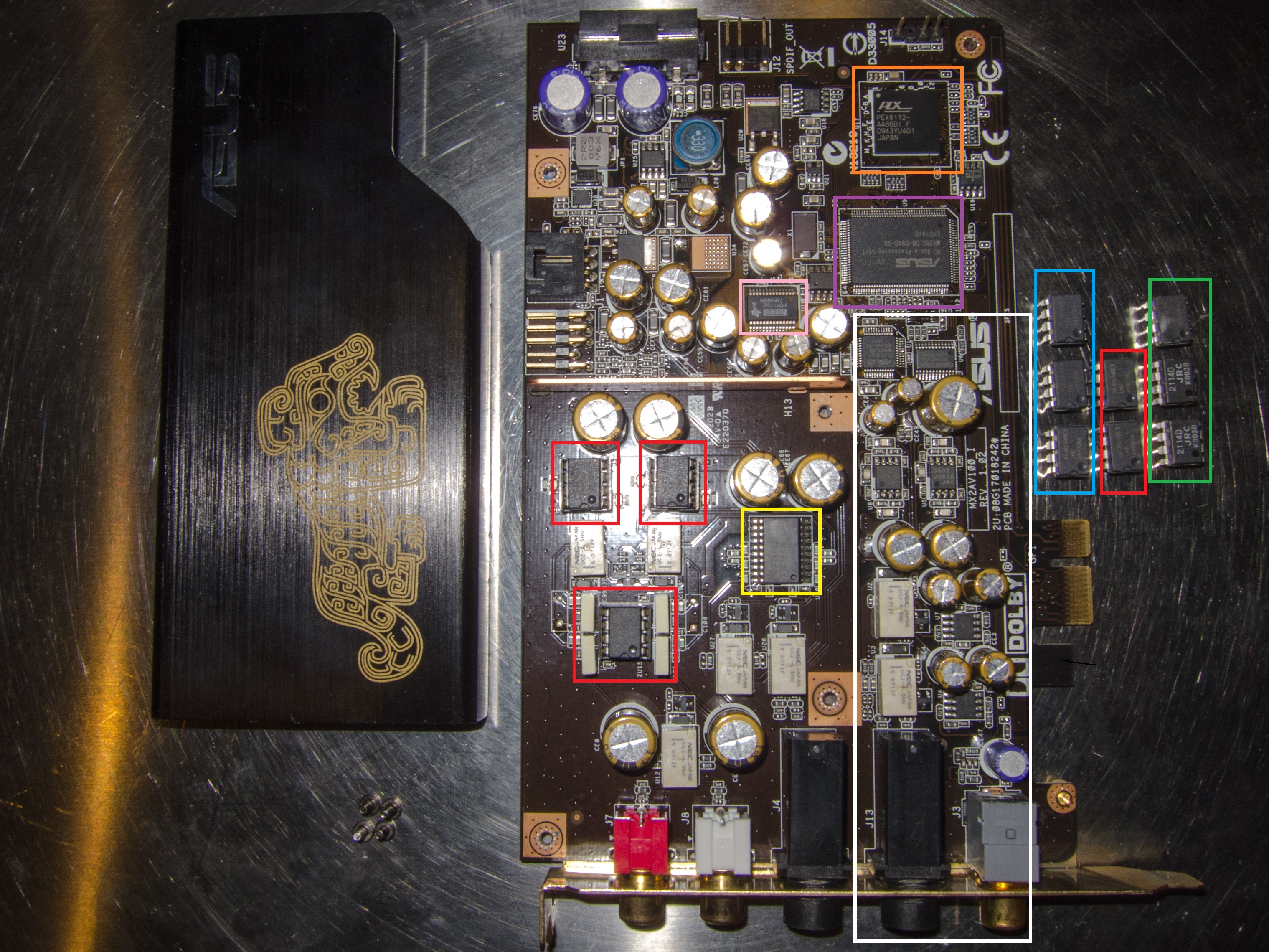What Does It Take To Turn The PC Into A Hi-Fi Audio Platform?
Most hi-fi audio is stored in digital form. With advancements in lossless compression, bit-perfect ripping/streaming, HD audio formats, multi-terabyte storage, and PC-friendly DACs, has the PC earned a place among high-end audio gear? At what price point?
Asus Xonar Essence STX
In May of 2009, Asus launched its Xonar Essence ST. The STX, which is almost identical except for its PCI Express interface (and a few other minor differences, notably the lack of daughterboard support for eight-channel audio), followed shortly thereafter.
The Xonar Essence ST(X) was one of the first cards designed specifically to support high-end headphones and bridge the gap between PCs and the high-end audiophile world. Most notably, it included 1/4" TRS connectors, which are rare on add-in cards. The Xonar ST(X) totally came out of left field; nobody imagined a motherboard manufacturer taking that route.
The STX is still sold today at close to its full launch price. How many other sound cards from 2009 can boast such a claim? Asus' design was presumably so effective that when the company introduced its Xonar Essence STU in October of 2013 (almost five years later), it pretty much mirrored the implementation, adding an external enclosure, two volume controls, and some other minor stuff (including 49720 op amps, which aren't popular on the STX, but might have been implemented differently). The Essence One uses somewhat higher-quality components and includes a few more features. But the STX must have been something special, since the Essence One is no longer for sale and the Essence STU doesn't appear to have much momentum.
So, what makes the Xonar Essence STX so successful?
Red: LME48960 op amps (used and spare), Green: stock JRC2114D + LM 4562 (unused), Blue: LME49720 (unused), Pink: TI PCM1792A DAC, Orange: PLX PCIe-to-PCI bridge, Purple: AV100/C-Media AV8788 DSP, Yellow: TI TPA6120A2 headphone amp, Gray: ADC section
One of its perceived strengths is the flexibility to manually swap out the operational amplifiers. Although many would argue that the real-world benefit of doing this is close to non-existent (in fact, you're more likely to make the card operate at a lower fidelity if you swap out the stock JRC2114D op amps which the card was designed for), tinkerers love the option. Tweaking a sound card, since overclocking it doesn't make much sense, resonated with the enthusiast community.
More important is the Essence STX's reportedly well-reviewed sound quality paired to high-end headphones. Asus' implementation of the once-top-of-the-line Texas Instruments PC1792A DAC and TPA6120A2 amplifier was well-received.
Get Tom's Hardware's best news and in-depth reviews, straight to your inbox.
And then there's pricing. The Essence One ($600-$1000) and Essence STU ($400), while likely sounding similar, lacked the STX's value proposition at $190.
Because it used PCI Express, Asus' Xonar Essence STX didn't need a dedicated (and expensive) power supply. Except for a three-way gain setting, it also didn't need volume controls. It didn't need an external enclosure or the cables to connect it. The company did choose to add analog inputs and an ADC, though I doubt many of the enthusiasts who bought an STX valued that feature.
If Asus decided to create cheaper and higher-quality sound cards, rather than pricey external DACs, I think it'd win over more converts. A second version, made more affordable by cutting the ADC stages and equipped with a newer-generation DAC, would be great. It's also conceivable that enthusiasts would pay for an optional front-panel display with a quality 32-bit volume control and LCD.

